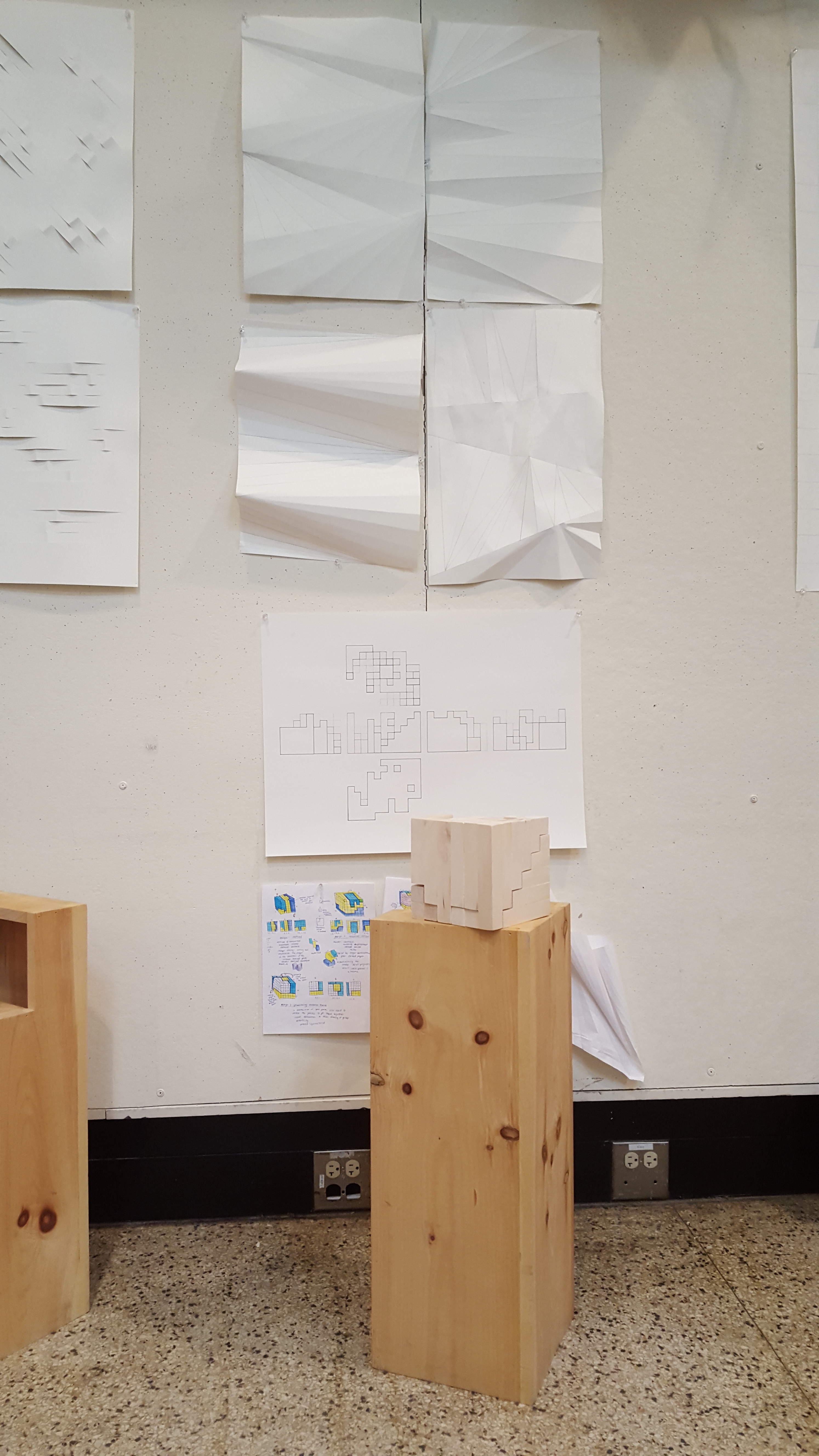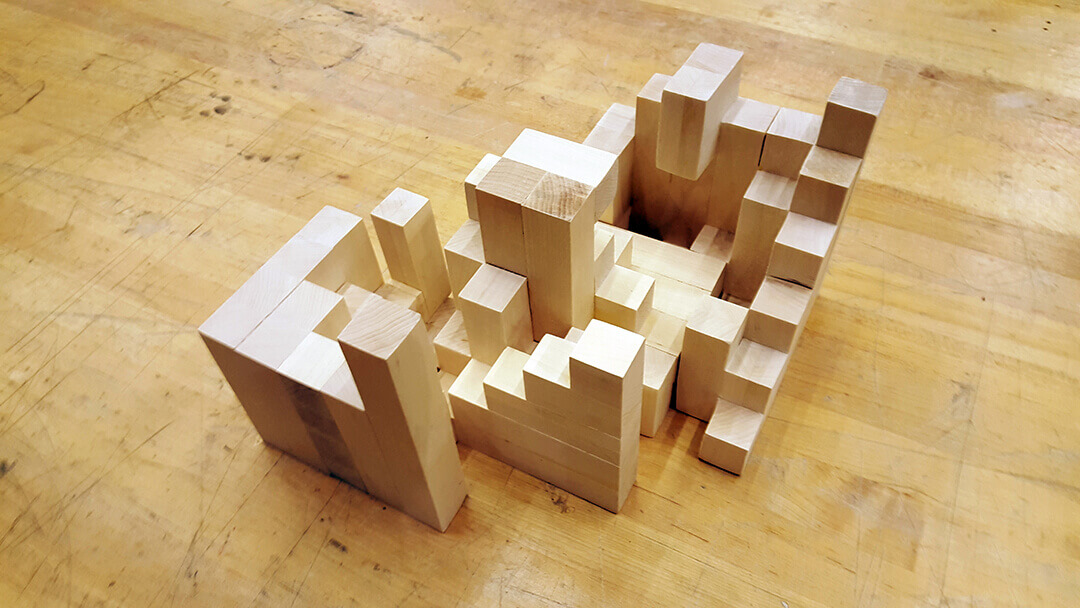

I produced this project during a core studio class that focused on iterative design. The assignment was to produce an interlocked cube that could be taken apart into three pieces and reassembled into a new form. My sculpture was inspired by glassblowing – specifically, rotation and expansion, two motions that glassblowing is centered around.
Glassblowing is also about the distinction between the outside and the inside - glassblown pieces are defined by the air that is injected in them, and heat differentials between the outside and inside of the glass are also key to understanding how to shape it.
Each piece of the cube can only be removed and positioned into its final state with rotation in 2 axes. The cube in its reconstructed form is an exploded version of the initial cube. It has a central axis with cascading lines on the exterior formed by diagonals that imply radial movement. Finally, the central core of the final piece is dense and stable while the exterior is fragile and more complex. This mirrors the stability of glass in its molten form (heat distribution).
6” x 6” x 6”,
Bass wood and wood glue,
2016
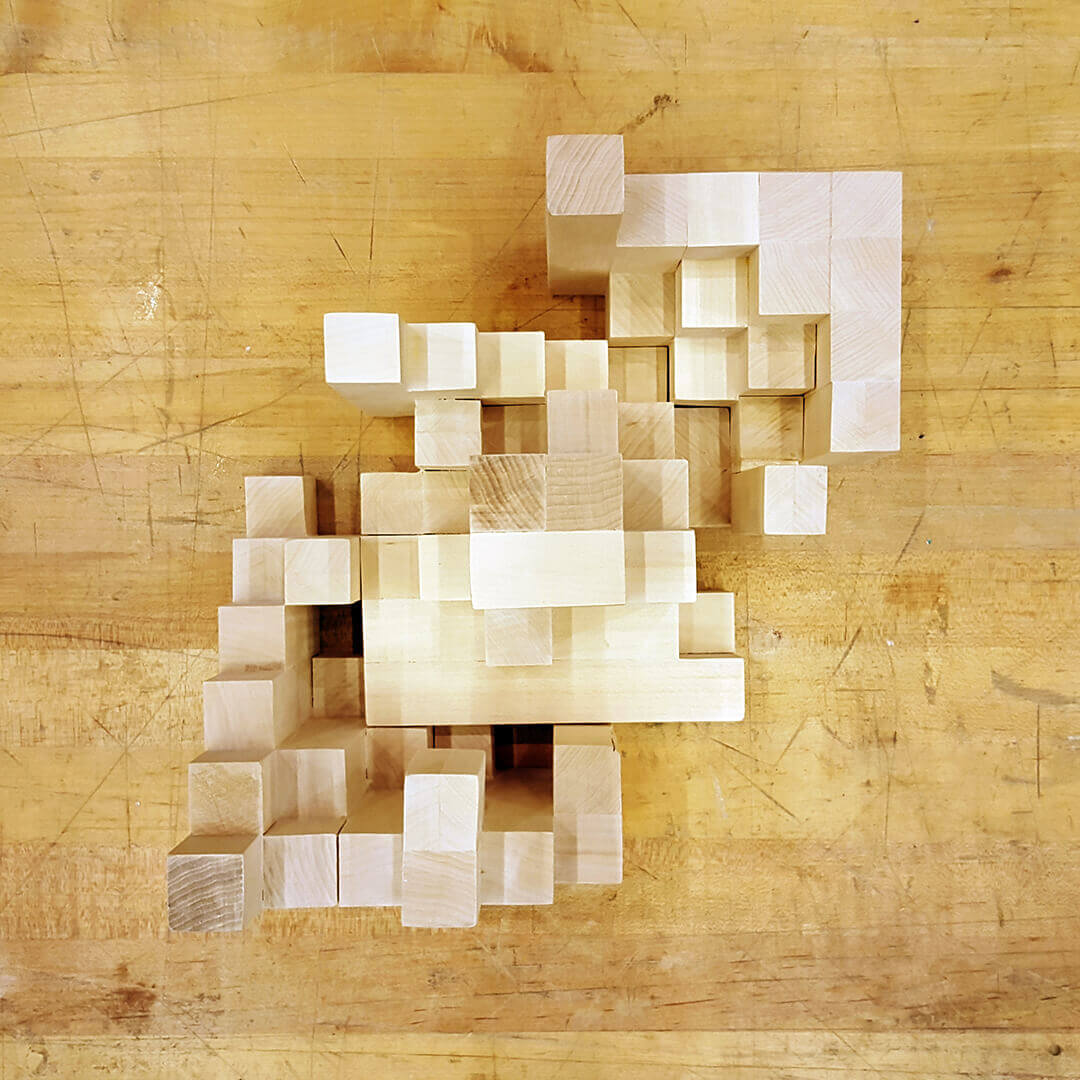
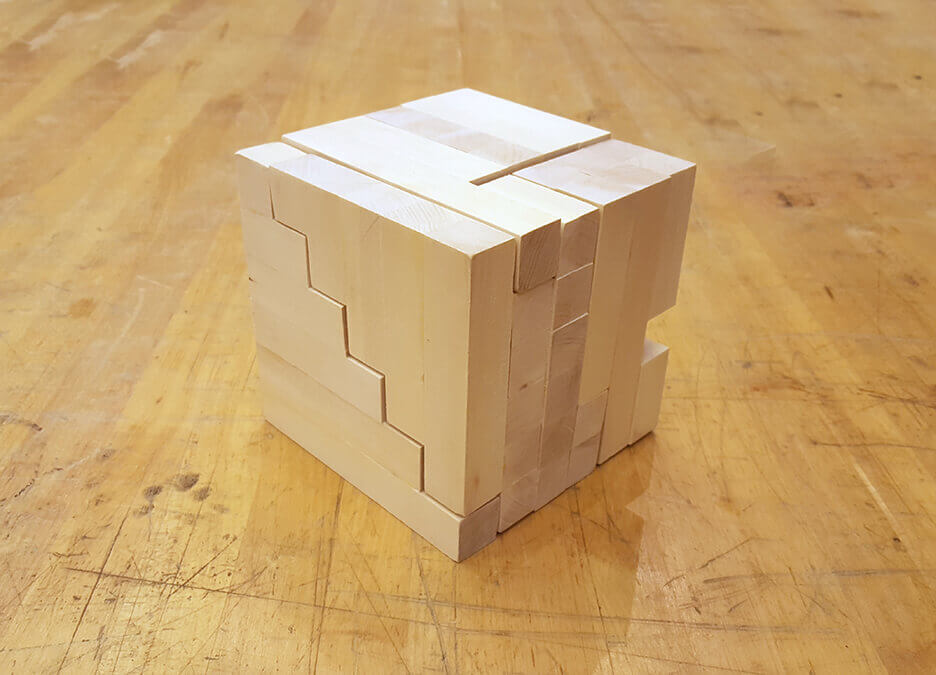
I started this project with multiple foam models - I created 2 models at half scale and to scale. The foam was easy to work with and took little time to set, so I was able to interact with my models to better shape the final structure in bass wood.
You can see a little bit into my design process on the image to the right - this was a 3"x3"x3" foam model I worked on, with sketches of my model exploded into layers. You can see each piece of the final product color coded in my sketches here.
Also visible below is the plan I generated for the final result when assembled into the sculpture - it was less interesting to generate the plan for the cube but this model uses line weight to show proximity (thicker line weight is closer to the viewer).
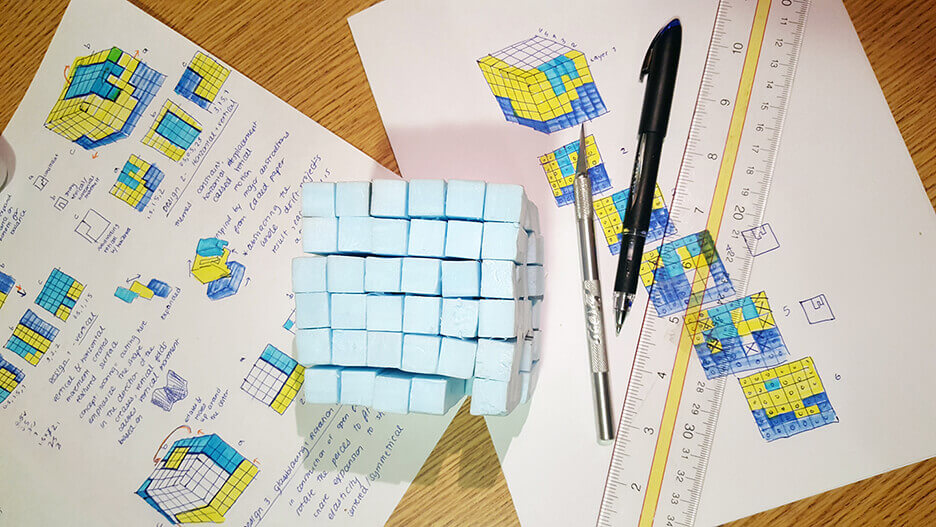
3” x 3” x 3”,
Styrofoam and Tacky Glue,
2016
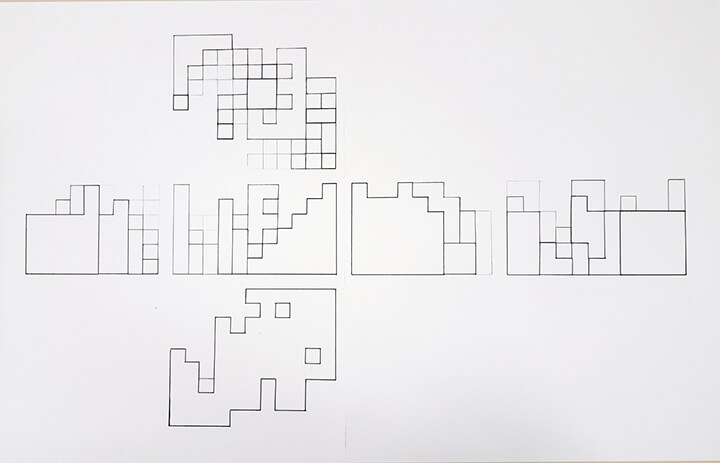
Plan,
Paper and pencil,
2016
The cube disassembles into 3 parts, each interlocking with the rest of the cube in different ways. Once the cube is divided, it can only be reassembled by rotating the pieces in different directions. This mimics the motion of glassblowing, and is central to the piece’s stability and form. Once the pieces are rotated, there are different ways to reassemble them. One open form that I chose was distributing the pieces so that each was resting on the ground, and connected to appear radially expanded. This form expresses multiple properties: a strong central foundation, radial expansion, and rotational motion in the transition from closed to open form. Another form of the piece can be made by using the central core as a joint to connect the other two pieces, so that they are radially expanding from a point in space. This position is less stable than the last, and is also expanded differently - like glass, certain forms are more stable than others, and the glass is always the most stable when it has a strong connection to the base of the pipe, which is consistent along both of these open forms. Another combination of the pieces is a synthesis of glassblowing in a different way - the center of this open form has a delicate descending spiral, while the outside has strong lines. This balance also demonstrates the physical properties of glass during expansion, where the outside of the glass cools quickly and is less prone to movement than the inside.
